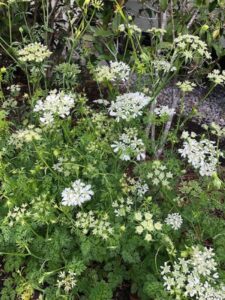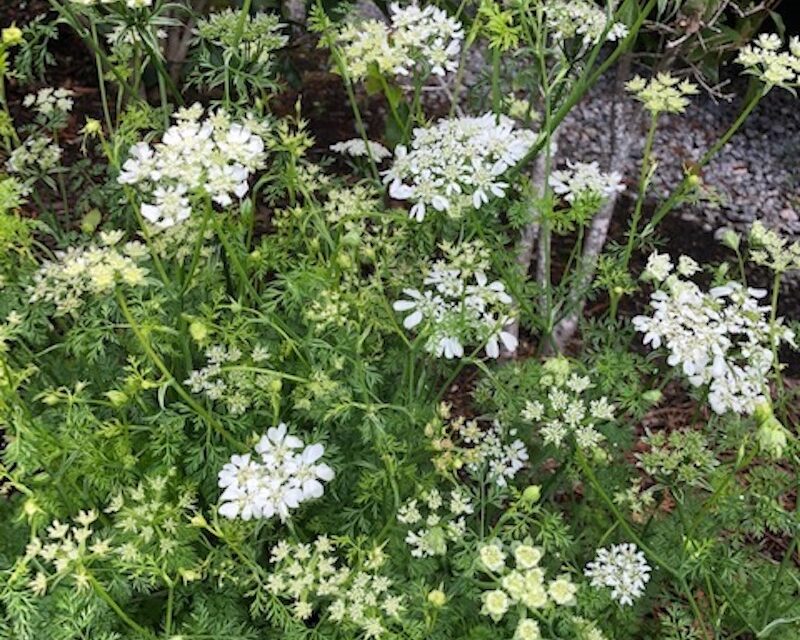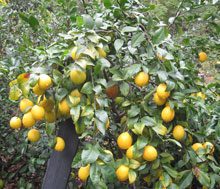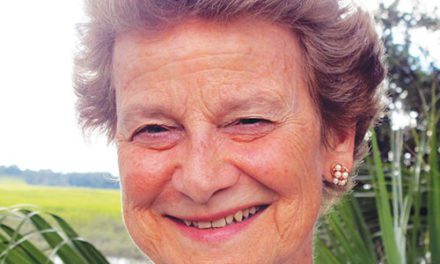
Orlaya
Many people order bulbs to plant in the autumn for spring flowers. I also order flower seeds. As strange as it may seem, there are certain flowers that do well when planted in the fall. I learned this from talking to local flower farmers as well as doing zoom meetings with British gardeners.
Sweet peas are traditionally planted in October in U.K. I had tried planting them in the early spring with no results. Once I started planting the seeds in the autumn- voila! I have fragrant sweet peas in April. Once it gets hot, they do not last long. I plant seeds in a container with a small trellis and that seems to work although if I had room, I would plant them in the garden directly into the soil and give them something large to climb upon.
Another flower that I plant in the autumn is Orlaya grandiflora. I am sorry that it does not have a common name although I have heard it refer to as white finch. It looks like a compact Queen Anne’s lace with even brighter and whiter flower heads. Flower farmers grow it as a cut flower and it lasts a long time in a vase and does not drop pollen like the wild Queen Anne’s lace does.
White dill (Ammi majus) also can be planted at the same time. It is taller than Orlaya, but also has an umbrella shaped blossom. Plants like these are known as umbellifers and this blossom shape is extremely popular with growers and gardeners. These three-foot tall plants will make a statement in your early spring garden.
One of my favorite flowers which is actually considered an herb is Borage (Borago officinalis). Borage is native to the Mediterranean and its seeds and leaves have medicinal uses that date back to Roman times. We do not use it as much in this country as they do in Europe and the United Kingdom. The leaves, that have the flavor of cucumber, are used in salads, yoghurt, cream cheese, and most particularly in a summer drink called Pimm’s Cup cocktail. The star shaped flowers are an astounding shade of bright blue and bees love it. The stems of the plant are hollow and it does not stand upright, but it is so worth having in your garden.
All of the flowers that I mentioned can be planted at the end of October. They will germinate and grow to about six inches tall and then go dormant until early spring when they come alive. The heat of late June and July will cause them to stop blooming, but you cannot beat them for an early summer display and the pollinators are more than happy with them.
Bulbs are traditionally planted in the fall. I plant mine as late as January. When you purchase bulbs from a reputable nursery or online dealer, they will tell you that in our zone, bulbs must be refrigerated for 10-12 weeks at a temperature of 38-45 degrees. This is known as stratifying the bulbs. Even some seeds need to be stratified before planting. I put my bulbs in a garage fridge until I remember to plant them usually after the holidays when I am throwing away the cranberries that I stored and forgot to use.
Tulips are a “one and done” down here], but daffodils (narcissi) will do well and return as long as they are for our zone of 9A and are precooled. Alliums grown well and although we cannot grow snowdrops, there is an alternative called Leucojum that looks like giant snowdrops that come up year after year. I have had success with iris when I remember where I have planted them and do not dig them up. This year I am trying tiny rock garden iris in my Japanese garden so stay tuned for my results.
When planting bulbs follow the instructions on depth and you might give them some bone meal in the hole. The most important thing to remember is that bulbs look best when massed together instead of one lonely little flower on its own. I plant them together in fives or sevens. Do not cut the foliage back on any bulbs until it turns brown and dries up. The leaves are storing nutrients for the following year. Bulbs in containers should be planted in the container and placed in the refrigerator for the 10-12 weeks. To be honest, I have never had much luck in forcing bulbs in containers. That may just be me!
Now is the time to purchase seeds and bulbs for fall planting or refrigerating. You will be happy to see the color that they provide next spring.









